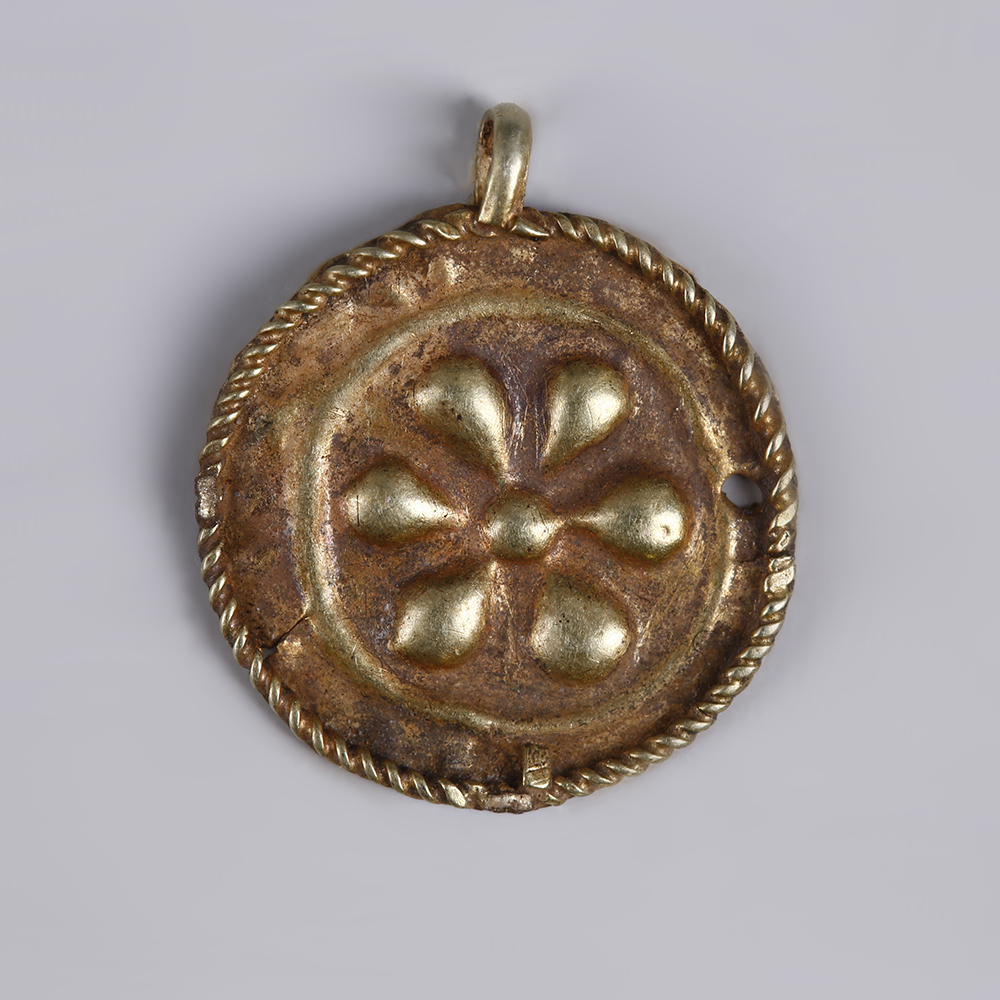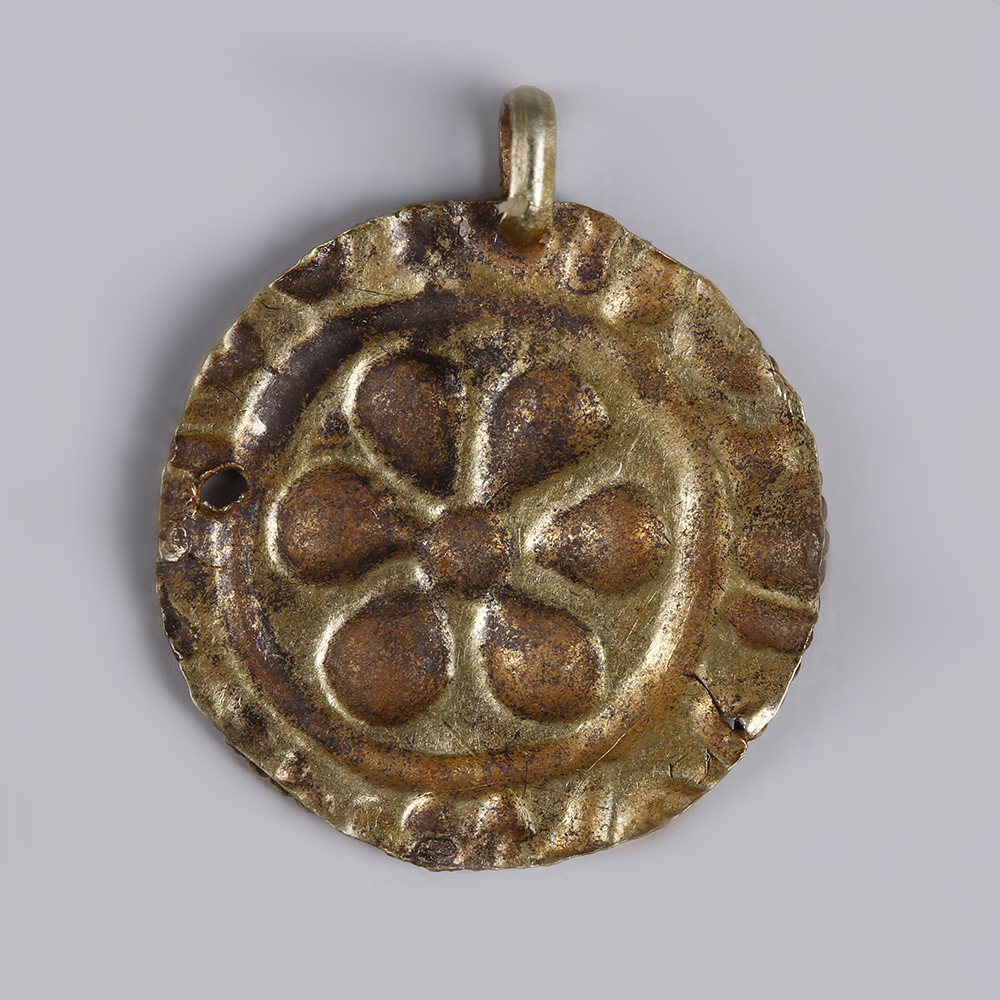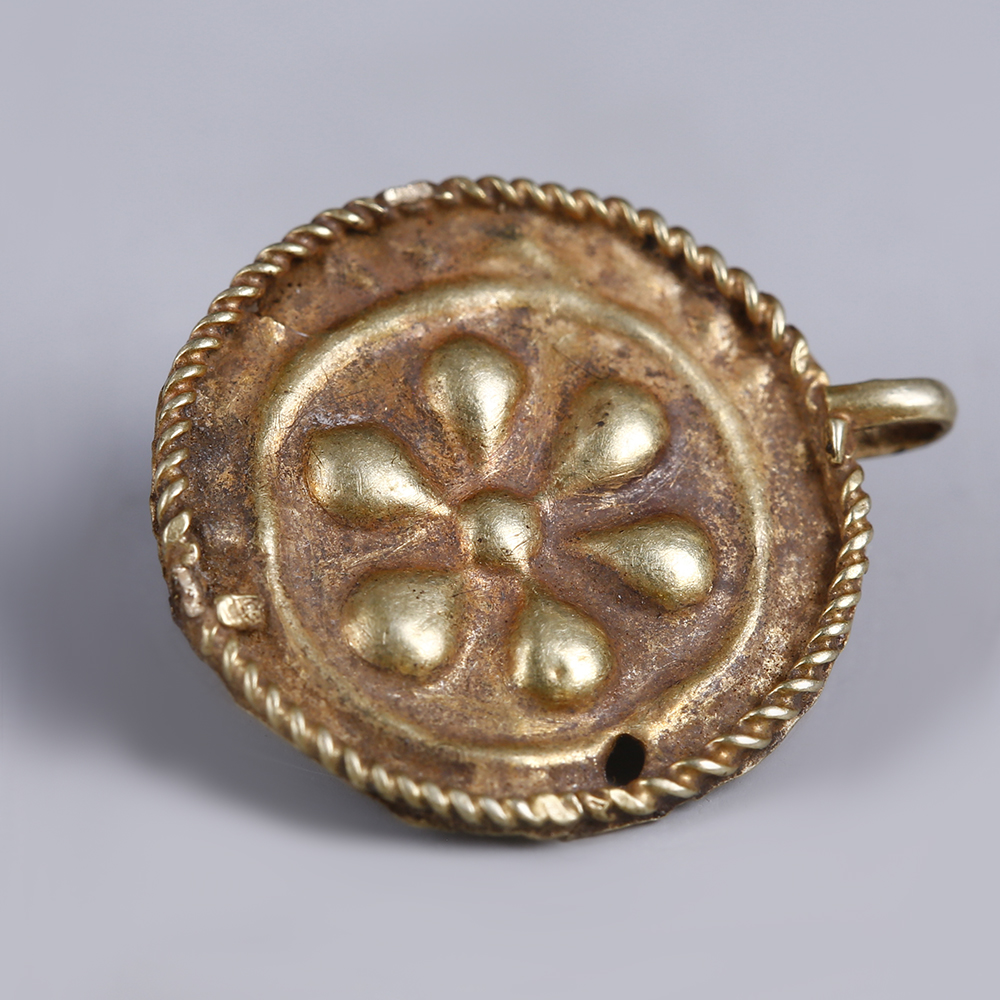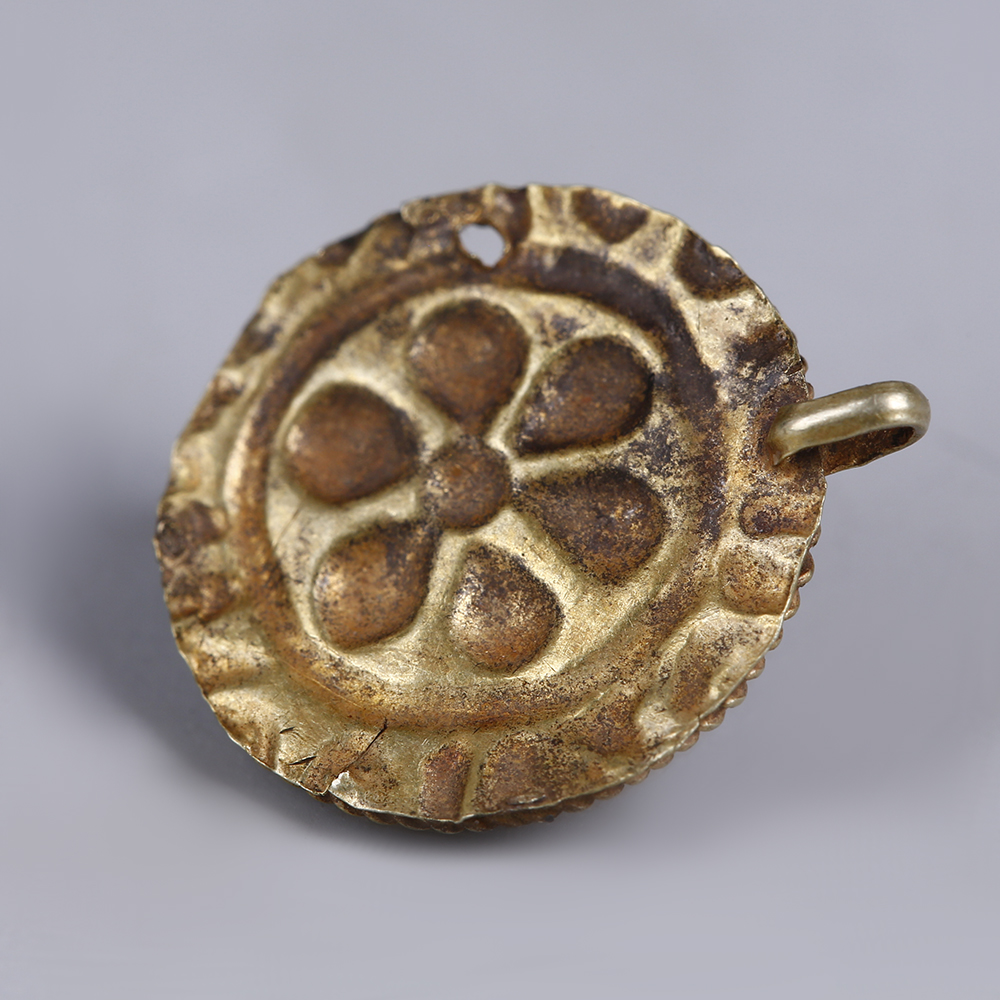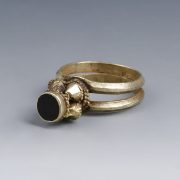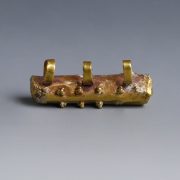Byzantine jewellery was a continuation of Roman traditions. As in many other cultures throughout history, Byzantine jewellery acted not only as an embellishment, but most importantly as a direct display of someone’s wealth and social status. The repoussé technique, which was in use since Greek and Roman times, allowed for patterns to be created with metalwork by hammering the reverse to produce a design in low relief. A variety of different metals were used such as silver, bronze, copper or gold, much like this beautiful example, to embellish vessels, ornaments and jewellery. The use of wearing gold roundels as pieces of jewellery dates back to the Old Babylonian Period. Similar gold discs have been recovered at the beginning of the 1st millennium BC from north-west Iran, precisely from the archaeological site of Hasanlu, and from Cyprus. The practice was then developed during Classical and Hellenistic times, reaching Rome and consequently the Byzantine Empire.
To discover more about Byzantine jewellery, please visit our relevant blog post:The Byzantine Empire, Art and Christianity.
